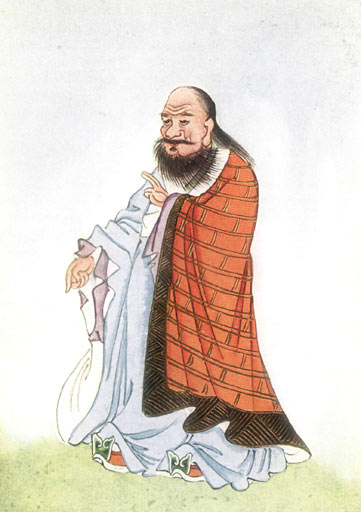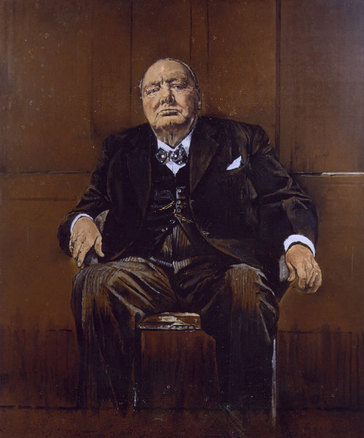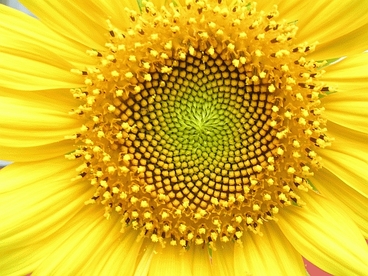 In my ongoing web search for old paintings of mine, in early 2015 I Googled 'Tony Rushton', until 2012 art editor at Private Eye and buyer of one of my paintings ('Quiet') in the 1966 Whitechapel Show. This portrait of Rushton standing in front of 'Quiet' turned up on the website of photographer Eric Hands. Taken in 2006, so TR has probably had the painting on his wall for 40 years. Eric has kindly given me permission to use the photo.
0 Comments
Two useful sayings for any painter from Lao-Tzu:
"A good traveler has no fixed plans, and is not intent on arriving." "Try to change it and you will ruin it. Try to hold it and you will lose it." From Wikipedia, the free encyclopedia
The Six principles of Chinese painting were established by Xie He (also known as Hsieh Ho), a writer, art historian and critic in 6th century China. He is most famous for his "Six points to consider when judging a painting" (繪畫六法, Pinyin:Huìhuà Liùfǎ), taken from the preface to his book "The Record of the Classification of Old Painters" (古畫品錄; Pinyin: Gǔhuà Pǐnlù). This was written circa 550 and refers to "old" and "ancient" practices. The six elements that define a painting are:
This is my post from a few years ago on a website called 'Painter's Keys': I just came across the post by Henryk Ptasiewicz while Googling paintings by Graham Sutherland and felt I had to comment on a number of points, even though the thread was started in 2003. Mr. Ptasiewicz writes, “For years we had seen, and were familiar with, the photograph of Churchill by Karsh, which captured his personality totally. So there was a great expectation that a painting would be even better.” Was there expectation that a painting would be even better? How do you know? Is a painting automatically better than a photograph? “However the final portrait just couldn’t compete with the public image we all had. Sutherland had painted a grumpy old man…” Well, probably he was a grumpy old man. But the painting (alas, only in reproduction) shows a grumpy old man with tremendous character and charisma. Are you saying that the painting should have depicted ‘the public image we all had,’ even if Sutherland felt that wasn’t the truth? It’s very likely Churchill didn’t get on with Sutherland, as he made no secret of his antipathy toward ‘Modern Art’ (i.e. anything after the Impressionists). “…and despite lots of pressure otherwise, it was so despised by Lady Churchill, that upon Winston’s death, she destroyed it.” Yes, that was unforgiveable. A selfish, philistine act. “There was a tremendous public relief; the masses hated it.” Was there really? Who showed that relief (apart from Mr. and Mrs. Churchill)? And who exactly are the masses? The taste of the masses, even if they exist, is not the best guide to quality in art. “We were told that this was great art, and it wasn’t.” Told by whom? Very few artists deserve to be called ‘great.’ Sutherland probably isn’t a great artist, but he’s a very, very good one whose reputation is rising once more after a period of neglect. The Churchill portrait was probably his best commissioned portrait (although it was said that he couldn’t get the feet right and decided to paint them out) and, in my humble opinion, it was a criminal act to destroy it. As a postscript, according to a Daily Telegraph story from 2015, Churchill's private secretary destroyed the painting, with Mrs Churchill giving her blessing after the fact. In the mid- to late 1960s I was making paintings based on mathematical sequences (simple ones), and when I found out about the golden ratio it made an enormous impression on me. The thought that a single proportion (1 to 1.618, or in linear terms, a+b is to a as a is to b) and the related Fibonacci sequence of 1, 1, 2, 3, 5, 8, 13, 21, etc. (every number after the first two is the sum of the two preceding ones) lay behind structures in art and nature such as ancient Greek architecture, sunflower seed patterns, the growth of shells, and human beings’ preferred rectangular proportion, was mind-boggling. Although the concept of the golden ratio as a universal law (and its use by ancient Greek architects) has been disputed, some scientists maintain that it is present at the atomic scale. |



 RSS Feed
RSS Feed